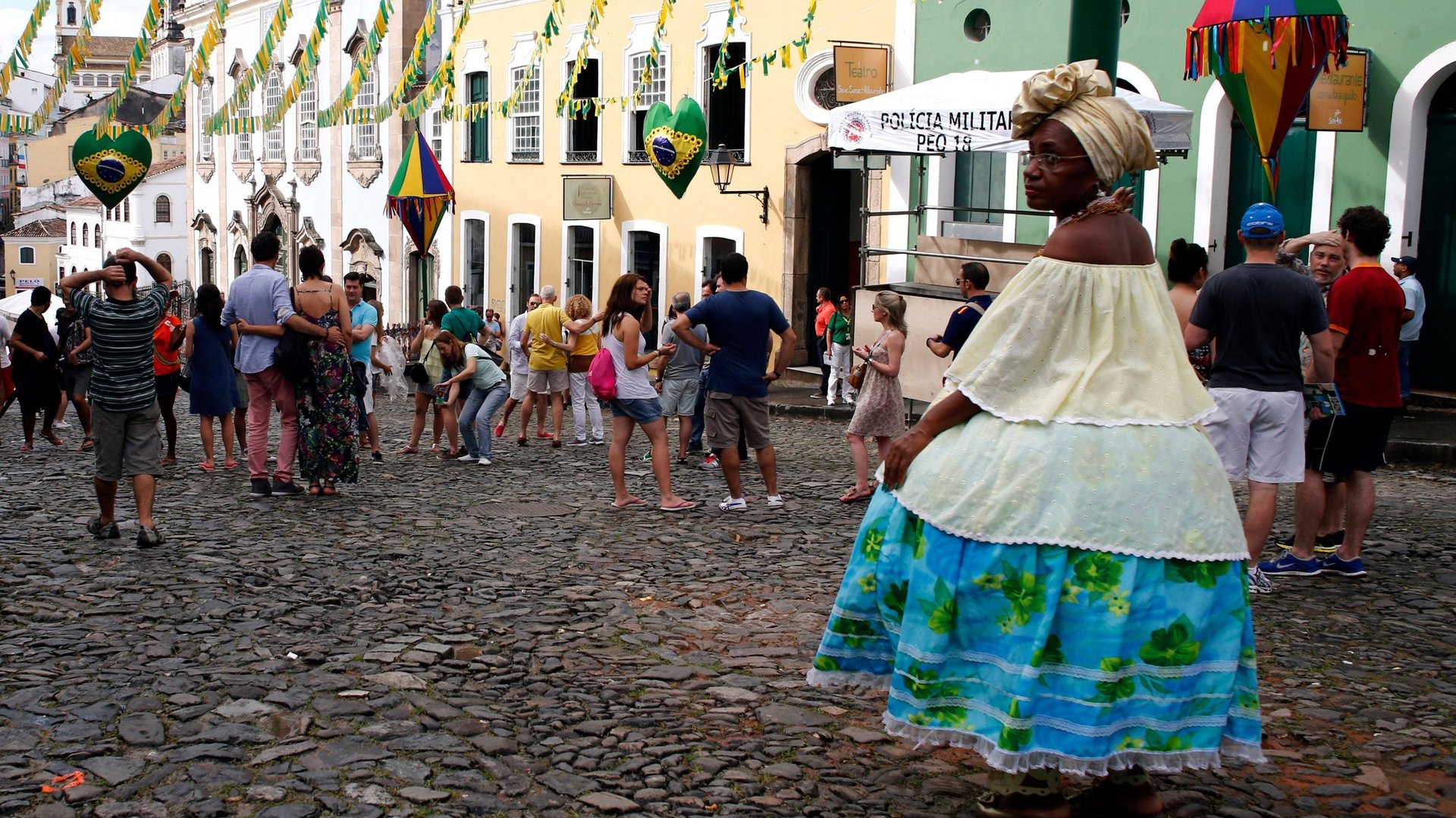A Vogue Brazil editor’s party evoking slavery images caused a massive backlash
About a week ago, Donata Meirelles, the style director of Vogue Brazil for the past seven years, celebrated her 50th birthday with an opulent party. A few days later, she had resigned from her job.


About a week ago, Donata Meirelles, the style director of Vogue Brazil for the past seven years, celebrated her 50th birthday with an opulent party. A few days later, she had resigned from her job.
The resignation stemmed from the outrage that ensued (link in Portuguese) after photos of Meirelles’s party circulated online. They show Meirelles, in a fancy pink dress and adorned in gold jewelry, seated on a large, extravagant chair. On either side of her are black women dressed all in white, with white headdresses.
As the Guardian reported, many criticized the scene for the way it recalled colonial depictions of a master posing with house slaves, down to the cadeira da sinhá, the ornate chair of the master. (Sinhá was a term for a female master.) One person on Instagram compared it to a photo from 1860 titled, “Woman from the Costa Carvalho family seated with two slaves.” Others dubbed it a slavery-themed party. The incident highlighted the unequal racial dynamics that persist in Brazil, even prompting a reply from Brazil’s samba legend Elza Soares, a woman who has been outspoken about what it means to be black in the country.
More than half of Brazil’s population identifies as black or mixed race, a legacy of the country’s history as a major importer of enslaved African people in the centuries of the trans-Atlantic slave trade. Professor and cultural critic Henry Louis Gates Jr. put the numbers in perspective in The Root: Of the 10.7 million Africans who survived the journey across the Atlantic between 1525 and 1866, only about 388,000 disembarked in North America. An estimated 4.9 million went to Brazil. (Other estimates put the number at 5.5 million.)
Today much of the country is proudly multiracial. But serious inequality still exists based on skin color, and white skin holds the privileged position. White Brazilians, for instance, tend to earn much more than black Brazilians, while Brazilians of African descent are far more likely to be killed than peers of other races. The country is still grappling with how to address these issues.
The day after her party, Meirelles took to Instagram to explain the images. It wasn’t a themed party. The party was in the state of Bahia, the epicenter of Afro-Brazilian culture, where it’s traditional to wear white on Fridays, the day the photos were taken. The women were in party dresses typical in Bahia. The chair wasn’t a master’s chair. It was part of the Afro-Brazilian religion candomblé. “Even so, if we caused different impressions than these, I am sorry,” she wrote.
Vogue Brasil put out a statement (link in Portuguese) as well on Instagram, saying it “profoundly regrets what happened and hopes the debate it generated serves as a learning experience.”
To others, though, intentionally or not the image glamorized a history of racial inequity. ”The black women were used as objects to create an exotic scene,” Stephanie Ribeiro, who writes the column #BlackGirlMagic in the Brazilian edition of Marie Claire, told the Guardian. “It’s reminiscent of colonialism and romanticizes those times. She was recreating the image where whites are superior and blacks are dehumanized.”
A few days ago, the black singer Elza Soares posted images to her Instagram with a similar staging as Meirelles’s birthday shots. Soares is sometimes likened to Brazil’s Tina Turner or Ella Fitzgerald, and has never shied from calling out injustice where she sees it, releasing songs such as “A carne,” where she sings, “The cheapest meat on the market is black meat.”
“People, I’m black and celebrate my race with pride since a time when it wasn’t ‘elegant’ to be black in this country,” she began her Instagram post, before going on to describe the sorts of injustices black Brazilians face: black people not being able to use the “boss’s” elevator, or black tram drivers being replaced with white ones during festivities, or waiters in a famous hotel in Rio de Janeiro not serving black patrons. ”I’m the great-grandchild of slaves, the grandchild of slaves,” she continues later. “I protest for the rights of my race since the time black women couldn’t enter the rooms of the sinhás.”
She didn’t mention Vogue or Meirelles. But it was an unmistakable rebuke.
The incident follows closely on some other big race-related missteps in fashion recently, notably Prada’s pricey trinkets inadvertently recalling the dehumanizing “Sambo” character and Gucci’s accidental echo of blackface with a face-covering sweater. Both companies are responding with measures to try to make sure they don’t repeat these mistakes.
In its statement, Vogue Brasil said it would form a panel of activists and academics to help create content and images that combat inequalities. Though the move arguably doesn’t address the root of the issue. Ribeiro told the Guardian, “They should just hire black people to work at Vogue Brasil, not create a forum for black activists to act like babysitters telling them whether something is racist or not.”